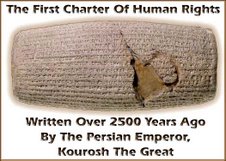When you get out of bed in the morning and feel the warmth and softness of the carpet, do you think about the fact that, apart from modern carpets, there are quite special rugs which tell their stories and speak a thousand languages?
We barely recognise names like Tabriz, Gabbeh, Isfahan or Bukhara in today`s time of modern design and simple lines, we think of them as “regular” carpet shops. But, these are actually names of Persian rugs. In ancient times, Persia encompassed today`s Iran and parts of central Asia, Afghanistan and Caucasian. Since the 6th century BC up to the next 200 years, this empire was the greatest and best organised empire of the old world, encompassing an area from India to Egypt and the Mediterranean.
Millions of knots, months of work
The art of Persian carpet weaving is considered to be the most famous area of Iranian art. This is no wonder because they are all hand-made from top natural materials like silk and wool, while months of work, a few anecdotes, fairy tales, stories and millions of knots are weaved into every one of them. A Persian carpet is much like a painting on the floor which carries ancient love and yearning inside.
The rug`s composition, its colours and motifs depict love, benevolence and desires of people who lived in the East several hundred years ago. In the time when children were raised with stories and poetry, when man understood and respected the language of nature, this is when the art of carpet weaving was created. In the modern world which fastens up our lives and leaves little room for enjoying, a Persian carpet on the floor or a wall awakens our primal nature, it rests our soul and develops our mind.
Wool and silk dominate
The earliest preserved Persian carpet dates back to the Safavid dynasty in the 16th century. Usual motifs are entwined stylised grapevine leaves, curly lines, palm trees, arabesques, medallions and geometric shapes, while animals and people were rarely depicted. Namely, Islam, the area`s dominant religion, bans showing and painting people. Animals are usually shown in hunt scenes. They are made exclusively from wool and silk, while cotton is sometimes used as a base for weaving, providing additional solidness and protection from wear. Silk carpets are less common because they are expensive and less resistant. This is why their value rises with time, and seeing how they are rare, valuable and not so resistant, they are often used as wall tapestries rather than floor covers.
A Gentle female hand is crucial
Only carpets weaved with a careful and dedicated female hand can be called Persian carpets. The world`s most up-to-date machines cannot weave what a woman`s hand can. Persian rugs have become status symbols with time – they are considered to be evidence of refinement and success, thus it is no wonder that the most expensive and finest Persian carpets are rented out at an astronomical price for several hours to attorneys offices, hotels, banks, multinational corporations, while their prices on the market reach from 200,000 to several million dollars.
The most famous Persian rug – Baharestan carpet (meaning Spring rug) – was commissioned for the the main audience hall of the Sasanian dynastic imperial Palace at Ctesiphon in the province of Khvârvarân (today Iraq). Suffice to say it is 140 metres long and 27 metres wide.
http://www.javno.com/en/lifestyle/clanak.php?id=131456
Published: March 13, 2008 10:08h






No comments:
Post a Comment